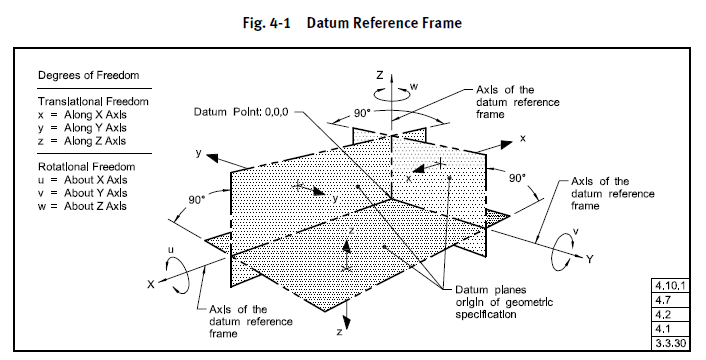sendithard
Industrial
I'm 0% sure my answer to the below question is correct, but at least I have some reasoning behind it stated below.... I sincerely appreciate everyone's help as I know this is fundamentals for some of you. Below, is a simple part and it appears Datum B is a center axis.
The question is how many degrees of freedom does Datum B constrain. From my understanding of 3Ddaves and other previous replies it doesn't matter where you slap this part down on datum A. Where ever you chose to slap it down that is the origin of choice(if you will) and because you have just place the part on datum A, perhaps on a pin on that surface, all the other features are constrained to it. So in theory although you can move this part all over the world on the infinite datum A plane, it is in theory located where ever you drop it and therefore has a x and y translation confinement.
If my thinking it correct, I would choose answer B. Datum B constrains 2 translational movements. Am I thinking right or wrong?....thanks for help. This is from a test that I didn't take and the correct answers are not given so the highlighted answer isn't necessarily correct.

The question is how many degrees of freedom does Datum B constrain. From my understanding of 3Ddaves and other previous replies it doesn't matter where you slap this part down on datum A. Where ever you chose to slap it down that is the origin of choice(if you will) and because you have just place the part on datum A, perhaps on a pin on that surface, all the other features are constrained to it. So in theory although you can move this part all over the world on the infinite datum A plane, it is in theory located where ever you drop it and therefore has a x and y translation confinement.
If my thinking it correct, I would choose answer B. Datum B constrains 2 translational movements. Am I thinking right or wrong?....thanks for help. This is from a test that I didn't take and the correct answers are not given so the highlighted answer isn't necessarily correct.


